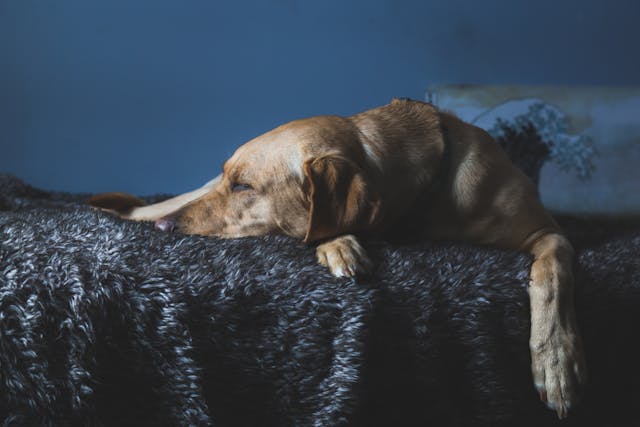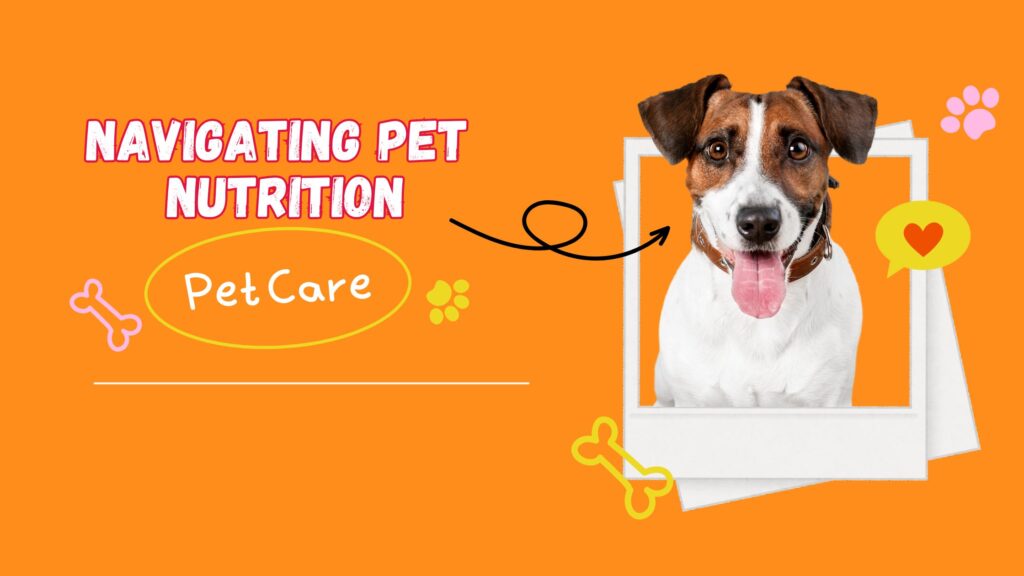Introduction
Pet grooming is more than just an occasional task or a way to keep your furry friend looking their best; it’s a vital part of pet care that has a significant impact on your pet’s overall health and well-being. Pet Grooming helps prevent a range of health issues, ensures comfort, and strengthens the bond between you and your pet. From brushing and bathing to nail trimming and ear cleaning, each pet grooming activity plays a crucial role in maintaining your pet’s hygiene and health.
In this comprehensive guide, we’ll explore the essential aspects of pet grooming, providing detailed tips and best practices to help you keep your pet in top condition. Whether you have a long-haired cat or a short-haired dog, these pet grooming techniques will ensure that your pet remains clean, comfortable, and healthy.
The Importance of Pet Grooming
Pet Grooming is not just about keeping your pet looking good; it’s about maintaining their health. Regular pet grooming helps to:
- Prevent Matting and Tangles: Especially in long-haired breeds, mats can form and cause pain, skin irritation, and even lead to infections.
- Control Shedding: Regular brushing reduces the amount of loose fur in your home and prevents excessive shedding.
- Maintain Skin Health: Brushing stimulates the production of natural oils, keeping your pet’s skin moisturized and healthy.
- Detect Health Issues Early: Regular pet grooming sessions allow you to check for any lumps, bumps, or skin conditions that might need veterinary attention.
- Ensure Comfort: Overgrown nails, matted fur, and ear infections can cause significant discomfort and even pain for your pet.
- Improve Bonding: Grooming is a great way to spend quality time with your pet, reinforcing the bond between you.
Brushing: Keeping Your Pet’s Coat Healthy and Shiny
Why Brushing is Essential
Brushing is one of the most fundamental aspects of pet grooming. It’s not only beneficial for your pet’s appearance but also for their health. Regular brushing helps to remove loose fur, dirt, and debris from your pet’s coat. It also helps to prevent matting and tangles, which can be uncomfortable and even painful for your pet.
For dogs, the frequency of brushing depends on their coat type. Long-haired breeds, such as Collies, Golden Retrievers, or Shih Tzus, may require daily brushing to prevent their fur from becoming tangled and matted. Short-haired breeds, like Beagles, Boxers, or Dachshunds, may only need brushing once a week to keep their coat in good condition.
Cats, especially long-haired breeds like Maine Coons or Persians, also benefit from regular brushing. Brushing helps to reduce the risk of hairballs, which can be a common issue in cats. Even short-haired cats, such as Siamese or American Shorthairs, benefit from occasional brushing to reduce shedding and prevent hairballs.
Choosing the Right Brush
Selecting the right brush for your pet is crucial for effective pet grooming. The type of brush you use depends on your pet’s coat type:
- Slicker Brushes: Ideal for removing loose fur and tangles in long-haired and curly coats. Slicker brushes have fine, short wires close together on a flat surface. They are perfect for dogs with thick undercoats, such as Golden Retrievers or German Shepherds, as well as for long-haired cats.
- Bristle Brushes: Suitable for short-haired pets. Bristle brushes help to distribute natural oils across the coat, making it shiny and smooth. These brushes work well on breeds like Beagles, Boxers, and Bulldogs.
- Deshedding Tools: Designed to remove excess undercoat and reduce shedding. These tools are particularly useful for breeds with double coats, such as Huskies or Labradors. They help reduce the amount of hair shed around your home.
- Rubber Brushes: Good for short-haired pets and those with sensitive skin. Rubber brushes are gentle and can be used to massage your pet’s skin, promoting blood circulation and removing loose hair.
When brushing your pet, use gentle, consistent strokes to avoid causing discomfort. For pets that are new to brushing, start slowly and use positive reinforcement, such as treats or praise, to make the experience enjoyable. Over time, your pet will come to see brushing as a pleasant activity rather than a chore.
Techniques for Effective Brushing
Brushing your pet may seem straightforward, but there are techniques that can make it more effective and comfortable for your pet:
- Start with the Right Tools: Make sure you have the appropriate brush for your pet’s coat type. A slicker brush may be too harsh for a short-haired pet, while a bristle brush may not be effective on a thick undercoat.
- Brush in the Direction of Hair Growth: Always brush in the direction that the hair grows. Brushing against the grain can be uncomfortable for your pet and may cause unnecessary pulling or tugging.
- Be Gentle: Use light pressure, especially around sensitive areas like the belly, legs, and face. If you encounter a tangle, don’t yank on it. Instead, work it out gently using short strokes.
- Check for Mats: Mats are clumps of tangled fur that can form close to the skin. If you find a mat, use a dematting tool or your fingers to gently work it out. In severe cases, you may need to trim the mat out with scissors, being very careful not to cut your pet’s skin.
- Regular Sessions: Regular brushing sessions, even if they’re short, are more effective than infrequent, long sessions. Frequent brushing helps prevent mats from forming and keeps your pet’s coat healthy.
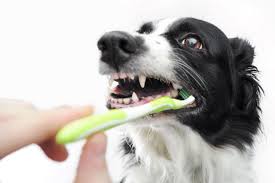
Bathing: Keeping Your Pet Clean and Fresh
How Often Should You Bathe Your Pet?
Bathing is another essential aspect of pet grooming, but the frequency of baths depends on your pet’s breed, coat type, and lifestyle. Overbathing can strip your pet’s skin of natural oils, leading to dryness and irritation, so it’s important to find the right balance.
For dogs, the general recommendation is to bathe them every 4-6 weeks, but this can vary. Dogs with oily coats, such as Basset Hounds, may need more frequent baths, while dogs with dry or sensitive skin, like Greyhounds or Bulldogs, may require fewer baths. If your dog spends a lot of time outdoors or has a tendency to roll in the dirt, more frequent baths may be necessary.
Cats are generally very clean animals and may only need occasional baths, especially if they have a skin condition or are particularly dirty. Long-haired cats, like Persians or Ragdolls, may need more frequent baths to keep their fur clean and free of mats.
Choosing the Right Shampoo
Using the right shampoo is crucial for your pet’s skin health. Always choose a pet-specific shampoo, as human shampoos can be too harsh for their sensitive skin. Look for shampoos that are free of harsh chemicals, artificial fragrances, and dyes, which can cause skin irritation.
There are various types of pet shampoos available, including:
- Hypoallergenic Shampoos: Ideal for pets with sensitive skin or allergies. These shampoos are formulated to be gentle and non-irritating.
- Medicated Shampoos: Used to treat specific skin conditions, such as dermatitis, fungal infections, or flea infestations. Medicated shampoos should only be used under the guidance of a veterinarian.
- Deodorizing Shampoos: Designed to neutralize odors and leave your pet smelling fresh. These shampoos are perfect for pets that have a tendency to get into smelly situations.
- Oatmeal Shampoos: Soothing for pets with dry or itchy skin. Oatmeal shampoos help to moisturize and calm irritated skin.
- Anti-Shedding Shampoos: Formulated to reduce excessive shedding. These shampoos contain ingredients that help strengthen the hair and reduce the amount of fur your pet sheds.
When bathing your pet, always follow the instructions on the shampoo bottle and rinse thoroughly to remove all residue. Shampoo residue left on your pet’s skin can cause irritation and discomfort. Avoid getting shampoo in your pet’s eyes, ears, or mouth, as this can cause irritation. If your pet has a particularly thick coat, you may need to rinse more than once to ensure all the shampoo is removed.
Bathing Techniques
Proper bathing techniques can make the experience more pleasant for both you and your pet:
- Prepare the Bath Area: Before you start, gather all the supplies you’ll need, including shampoo, conditioner (if needed), a cup for rinsing, towels, and a non-slip mat for the tub. Having everything within reach will make the process smoother.
- Brush Before Bathing: Brushing your pet before the bath helps to remove loose fur and tangles, making the bathing process easier. It also reduces the amount of fur that ends up clogging your drain.
- Test the Water Temperature: Make sure the water is lukewarm – not too hot and not too cold. Water that is too hot can burn your pet’s skin, while water that is too cold can make the experience uncomfortable.
- Wet Your Pet Thoroughly: Use a handheld showerhead or a cup to wet your pet’s coat completely. Make sure the water penetrates down to the skin, especially in thick-coated breeds.
- Apply Shampoo: Start by applying a small amount of shampoo to your pet’s back, then work it into a lather. Be sure to get under your pet’s belly, behind the ears, and around the tail. Use your fingers to massage the shampoo into the coat, taking care to avoid the eyes and ears.
- Rinse Thoroughly: Rinse your pet’s coat until the water runs clear, making sure to remove all traces of shampoo. Any leftover shampoo can cause skin irritation.
- Dry Your Pet: After rinsing, gently squeeze out excess water from your pet’s coat and wrap them in a towel. Rub gently to absorb moisture, and consider using a blow dryer on a low, cool setting if your pet tolerates it. Make sure your pet is completely dry, especially in cold weather, to prevent them from getting chilled.
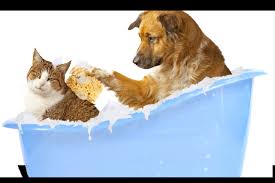
Nail Trimming: Maintaining Healthy Paws
Why Nail Trimming is Important
Nail trimming is an often-overlooked aspect of pet grooming, but it’s crucial for maintaining your pet’s health and comfort. Overgrown nails can cause a range of problems, including:
- Pain and Discomfort: Overgrown nails can curl into the paw pads, causing pain and difficulty walking.
- Injury: Long nails are more likely to snag on carpets or furniture, leading to broken or torn nails, which can be painful and require veterinary care.
- Joint Issues: Long nails can affect your pet’s gait, leading to joint discomfort and long-term issues like arthritis.
- Infections: If a nail breaks or tears, it can become infected, leading to further complications.
For dogs, nails should be trimmed every 3-4 weeks, depending on how quickly they grow. Some dogs wear down their nails naturally through regular activity, especially if they walk frequently on hard surfaces. For cats, nails should be trimmed every 2-4 weeks, particularly for indoor cats who don’t have as many opportunities to wear down their nails naturally.
Tools for Nail Trimming
The right tools make nail trimming easier and safer for both you and your pet:
- Guillotine Clippers: These clippers have a small hole where you insert the nail, and a blade that slides across to cut the nail. Guillotine clippers are easy to use and provide a clean cut, making them ideal for small to medium-sized dogs and cats.
- Scissor Clippers: These look like a pair of scissors with a notch for the nail. They are effective for larger dogs with thicker nails, providing more leverage and control.
- Nail Grinders: These are electric tools that grind down the nail rather than cutting it. Nail grinders are ideal for pets who are sensitive to clippers or for those with thick nails. They provide a smooth, rounded finish and reduce the risk of cutting the nail too short.
- Styptic Powder: This is essential to have on hand in case you accidentally cut the quick, which is the sensitive part of the nail that contains blood vessels. Styptic powder quickly stops the bleeding and helps to soothe the area.
Nail Trimming Techniques
Nail trimming can be a daunting task in pet grooming, especially if your pet is not accustomed to it. Here’s how to make the process smoother:
- Get Your Pet Comfortable: Start by getting your pet used to having their paws handled. Gently touch and hold their paws regularly, offering treats and praise to create a positive association.
- Use the Right Tools: Choose the appropriate tool for your pet’s size and nail thickness. Ensure that the clippers are sharp, as dull blades can crush the nail rather than cutting it cleanly.
- Know the Quick: The quick is the pink area within the nail that contains nerves and blood vessels. Cutting into the quick can be painful and cause bleeding, so it’s important to avoid it. In light-colored nails, the quick is visible, but in dark-colored nails, it can be harder to see. In these cases, trim small amounts at a time to avoid cutting too deep.
- Trim in Small Increments: Rather than cutting a large portion of the nail at once, trim small increments. This reduces the risk of cutting the quick and allows you to stop before reaching it.
- Angle the Clippers Correctly: Hold the clippers at a slight angle, cutting from top to bottom rather than side to side. This helps to prevent the nail from splintering.
- Use Positive Reinforcement: Reward your pet with treats and praise after each nail is trimmed. This helps to make the experience positive and reduces anxiety in future sessions.
- Don’t Rush: If your pet is anxious or if you’re unsure, take your time. It’s better to trim just one or two nails at a time than to rush and cause your pet discomfort or injury.
- Seek Professional Help: If you’re uncomfortable trimming your pet’s nails or if your pet is particularly difficult to handle, don’t hesitate to seek help from a professional groomer or veterinarian.
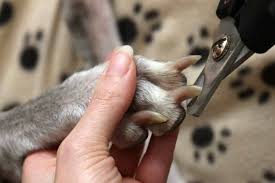
Ear Cleaning: Preventing Infections and Discomfort
Why Ear Cleaning is Important
Ear cleaning is another critical aspect of pet grooming, especially for breeds prone to ear infections. Regular ear cleaning helps to:
- Prevent Infections: Dirt, wax, and moisture can accumulate in the ears, leading to bacterial or yeast infections.
- Reduce Odor: Unclean ears can develop an unpleasant odor due to the buildup of wax and debris.
- Ensure Comfort: Ears that are clogged with wax or debris can be uncomfortable for your pet, causing them to scratch or shake their head excessively.
Breeds with floppy ears, such as Cocker Spaniels, Basset Hounds, and Bulldogs, are particularly prone to ear infections because their ears provide a warm, moist environment where bacteria and yeast can thrive. Cats, especially those with allergies, may also be prone to ear issues and benefit from regular ear cleaning.
Tools and Products for Ear Cleaning
To clean your pet’s ears safely and effectively, you’ll need the following tools:
- Ear Cleaner: Choose a veterinarian-recommended ear cleaner that is specifically formulated for pets. Avoid using hydrogen peroxide or alcohol, as these can irritate the ear canal.
- Cotton Balls or Gauze: Use these to wipe out any debris from the ear canal. Avoid using cotton swabs, as they can push debris further into the ear canal and potentially damage the eardrum.
- Towel: Have a towel on hand to wipe up any excess cleaner or debris.
Ear Cleaning Techniques
Cleaning your pet’s ears can be a delicate process, so it’s important to be gentle and patient:
- Check the Ears Regularly: Before cleaning, examine your pet’s ears for any signs of redness, swelling, or discharge. If you notice anything unusual, consult your veterinarian before cleaning.
- Apply the Ear Cleaner: Hold your pet’s ear flap up and gently squeeze a few drops of ear cleaner into the ear canal. Be careful not to insert the tip of the bottle too far into the ear.
- Massage the Ear: Gently massage the base of the ear for about 30 seconds. This helps to loosen any debris and allows the ear cleaner to do its job.
- Let Your Pet Shake: Allow your pet to shake their head. This helps to dislodge any debris or wax from the ear canal.
- Wipe Away Debris: Use a cotton ball or gauze to gently wipe out the ear canal, removing any debris or excess cleaner. Be careful not to go too deep into the ear canal.
- Reward Your Pet: After cleaning both ears, reward your pet with treats and praise to reinforce positive behavior.
- Monitor for Signs of Infection: After cleaning, keep an eye on your pet’s ears for any signs of infection, such as redness, swelling, or a foul odor. If you notice any of these signs, contact your veterinarian.

Dental Care: Maintaining Healthy Teeth and Gums
The Importance of Dental Care
Dental care is often overlooked in pet grooming, but it’s crucial for your pet’s overall health. Poor dental hygiene can lead to a range of problems, including:
- Bad Breath: One of the first signs of dental disease is bad breath. While a mild odor is normal, a strong, unpleasant smell can indicate an underlying issue.
- Gum Disease: Plaque and tartar buildup can lead to gum disease, which can cause pain, inflammation, and tooth loss.
- Tooth Decay: Without regular dental care, your pet’s teeth can decay, leading to cavities and infections.
- Systemic Health Issues: Bacteria from dental infections can enter the bloodstream and affect other organs, such as the heart, liver, and kidneys.
For dogs, regular dental care includes brushing their teeth at least 2-3 times a week, providing dental chews, and scheduling professional cleanings with your veterinarian. For cats, regular brushing and the use of dental treats or water additives can help maintain dental health.
Tools for Dental Care
To maintain your pet’s dental health, you’ll need the following tools:
- Pet Toothbrush: Use a toothbrush specifically designed for pets. These toothbrushes have soft bristles and are shaped to fit comfortably in your pet’s mouth.
- Pet Toothpaste: Never use human toothpaste on your pet, as it can be harmful if swallowed. Instead, choose a pet-safe toothpaste that is flavored to appeal to your pet, such as poultry or beef flavor.
- Dental Chews: Dental chews help to reduce plaque and tartar buildup while also satisfying your pet’s natural chewing instinct.
- Water Additives: These are added to your pet’s drinking water to help reduce plaque and freshen breath. They are especially useful for pets that resist tooth brushing.
Techniques for Effective Dental Care
Maintaining your pet’s dental health is a combination of regular brushing and providing appropriate dental products:
- Introduce Brushing Slowly: If your pet is not used to having their teeth brushed, start slowly. Begin by letting them taste the toothpaste and getting used to the toothbrush. Gradually work up to brushing a few teeth at a time.
- Use the Right Technique: Hold the toothbrush at a 45-degree angle to your pet’s teeth and use gentle, circular motions. Focus on the outer surfaces of the teeth, as these are the areas where plaque and tartar are most likely to build up.
- Be Consistent: Aim to brush your pet’s teeth at least 2-3 times a week. Consistency is key to preventing dental problems.
- Incorporate Dental Products: In addition to brushing, offer dental chews and water additives to help maintain your pet’s oral health.
- Monitor for Signs of Dental Issues: Keep an eye out for signs of dental problems, such as bad breath, red or swollen gums, difficulty eating, or loose teeth. If you notice any of these signs, consult your veterinarian.
Conclusion
Pet grooming is an essential aspect of responsible pet ownership, contributing significantly to your pet’s overall health and well-being. By regularly brushing, bathing, trimming nails, cleaning ears, and maintaining dental health, you can prevent a range of health issues and ensure that your pet remains comfortable and happy. Remember, pet grooming is not just about aesthetics; it’s about keeping your pet healthy, comfortable, and safe.
Whether you’re a new pet owner or have been caring for pets for years, incorporating these grooming practices into your routine will help you provide the best care for your furry friend. Pet Grooming is also an excellent opportunity to bond with your pet, making them feel loved and secure. So, take the time to groom your pet regularly – they’ll thank you with their happiness, health, and the strong bond you share.
If you found these grooming tips helpful, there’s even more to discover on our website! Visit PetPal for a wide range of pet care products, grooming tools, and expert advice tailored to your pet’s needs.
Don’t forget to follow us on social media for daily tips, cute pet photos, and exclusive deals! Follow us @petpalpetstore to stay connected and make sure your pet gets the best care possible.

